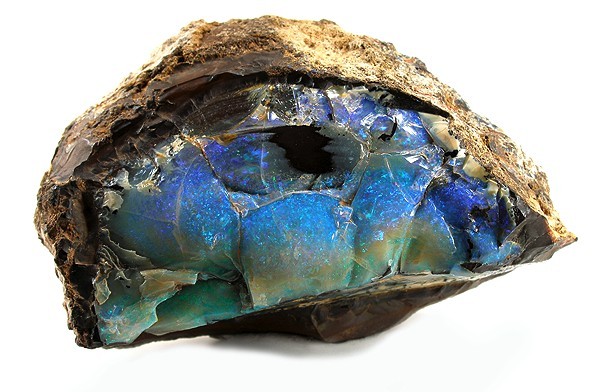Opalescence on:
[Wikipedia]
[Google]
[Amazon]

 Opalescence refers to the optical phenomena displayed by the
Opalescence refers to the optical phenomena displayed by the  In a physical sense, some cases of opalescence could be related to a type of
In a physical sense, some cases of opalescence could be related to a type of

 Opalescence refers to the optical phenomena displayed by the
Opalescence refers to the optical phenomena displayed by the mineraloid
A mineraloid is a naturally occurring mineral-like substance that does not demonstrate crystallinity. Mineraloids possess chemical compositions that vary beyond the generally accepted ranges for specific minerals. For example, obsidian is an a ...
gemstone
A gemstone (also called a fine gem, jewel, precious stone, or semiprecious stone) is a piece of mineral crystal which, in cut and polished form, is used to make jewelry or other adornments. However, certain rocks (such as lapis lazuli, opal, ...
opal
Opal is a hydrated amorphous form of silica (SiO2·''n''H2O); its water content may range from 3 to 21% by weight, but is usually between 6 and 10%. Due to its amorphous property, it is classified as a mineraloid, unlike crystalline form ...
opalescent. 2019. In Noah Webster's 1828 American Dictionary of the English Language. Retrieved January 7, 2019, from https://1828.mshaffer.com/d/word/opalescent (hydrated silicon dioxide).Opal Gemstone Information. 2018. In Gemstone Select. Retrieved January 8, 2019, from https://www.gemselect.com/gem-info/opal/opal-info.php However, there are three notable types of opal
Opal is a hydrated amorphous form of silica (SiO2·''n''H2O); its water content may range from 3 to 21% by weight, but is usually between 6 and 10%. Due to its amorphous property, it is classified as a mineraloid, unlike crystalline form ...
(precious, common, and fire),Douma, M., curator. 2008. Opal. In Cause of Color. Retrieved January 8, 2019, from http://www.webexhibits.org/causesofcolor/15F.html each with different optical effects, so the intended meaning varies depending on context:
* Precious opal. The general definition of opalescence is a milky iridescence
Iridescence (also known as goniochromism) is the phenomenon of certain surfaces that appear to gradually change color as the angle of view or the angle of illumination changes. Examples of iridescence include soap bubbles, feathers, butterfl ...
displayed by an opal which describes the visual effect of precious opal very well, and opalescence is commonly used in lay terms as a synonym for iridescence
Iridescence (also known as goniochromism) is the phenomenon of certain surfaces that appear to gradually change color as the angle of view or the angle of illumination changes. Examples of iridescence include soap bubbles, feathers, butterfl ...
.
* Common opal. In contrast, common opal does not display an iridescence
Iridescence (also known as goniochromism) is the phenomenon of certain surfaces that appear to gradually change color as the angle of view or the angle of illumination changes. Examples of iridescence include soap bubbles, feathers, butterfl ...
but often exhibits a hazy sheen of light from within the stone—the phenomenon that gemologists define strictly as opalescence."Opal Description". 2019. Gemological Institute of America. Retrieved January 8, 2019, from https://www.gia.edu/opal-description. This milky sheen displayed by opal is a form of adularescence.
* Fire opal is a relatively transparent gemstone with a vivid yellow-orange-red color and rarely displays iridescence.
The optical effects seen in various types of opal are a result of refraction
In physics, refraction is the redirection of a wave as it passes from one medium to another. The redirection can be caused by the wave's change in speed or by a change in the medium. Refraction of light is the most commonly observed phenomen ...
(precious and fire) or reflection (common) due to the layering, spacing, and size of the myriad microscopic silicon dioxide spheres and included water (or air) in its physical structure. When the size and spacing of the silica
Silicon dioxide, also known as silica, is an oxide of silicon with the chemical formula , most commonly found in nature as quartz and in various living organisms. In many parts of the world, silica is the major constituent of sand. Silica is ...
spheres are relatively small, refracted blue-green colors are prevalent; when relatively larger, refracted yellow-orange-red colors are seen; and when larger yet, reflection yields a milky-hazy sheen.Smigel, Barbara W. 2012. Optical Phenomena in Gemstones. In Introduction to Gemology. Retrieved January 8, 2019, from http://www.bwsmigel.info/Lesson6/DE.Optical.Phenomena.html
 In a physical sense, some cases of opalescence could be related to a type of
In a physical sense, some cases of opalescence could be related to a type of dichroism
In optics, a dichroic material is either one which causes visible light to be split up into distinct beams of different wavelengths (colours) (not to be confused with dispersion), or one in which light rays having different polarizations are abs ...
seen in highly dispersed systems with little opacity. Due to Rayleigh scattering, a transparent material appears yellowish-red in transmitted white light and blue in the scattered light perpendicular to the transmitted light. The phenomenon illustrated in the bottom photo is an example of the Tyndall effect
The Tyndall effect is light scattering by particles in a colloid or in a very fine suspension. Also known as Tyndall scattering, it is similar to Rayleigh scattering, in that the intensity of the scattered light is inversely proportional to ...
.
See also
* Aventurescence * Labradorescence * Moonstone (gemstone)References
{{Reflist Optical phenomena